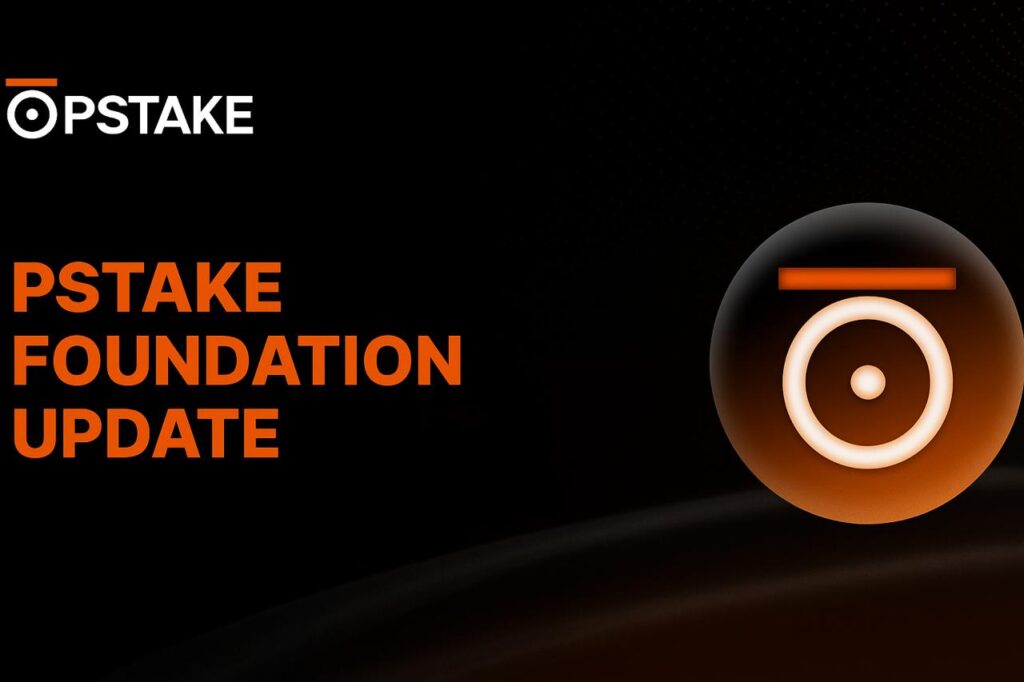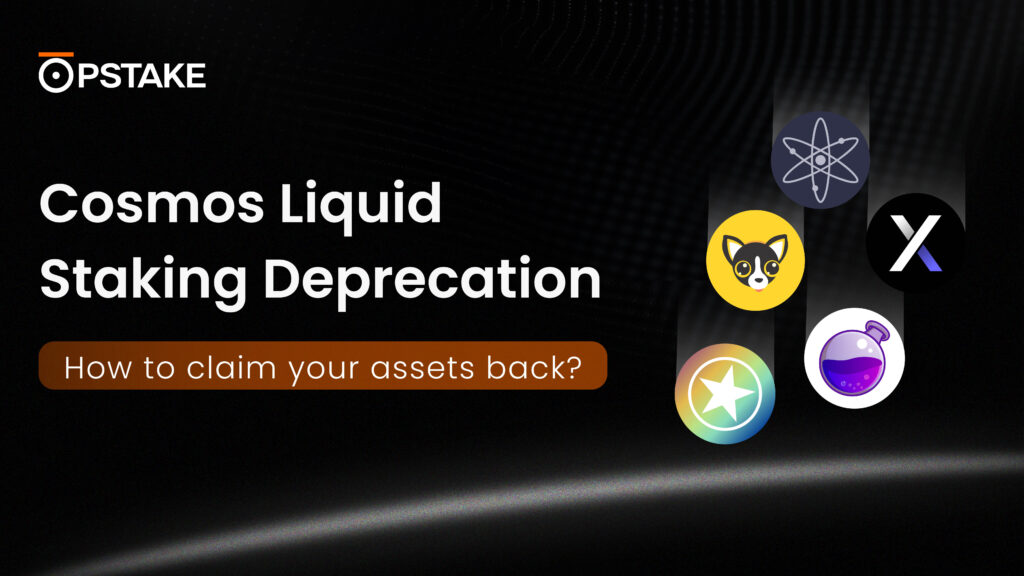Author: Fahad Sheikh
Note: This is a community-written piece. The views expressed within are those of the author and not necessarily those of the pSTAKE team.
Finding ways to maximize income and earning potential is an adventure almost everyone in crypto seeks to embark on. Crypto enthusiasts utilize several ways to earn rewards and incomes using their crypto. A crypto user may hold, trade, or stake to earn.
Staking your coins is probably by far one of the easiest and most convenient ways for crypto users to earn. However, there are 2 points of contention here: not all coins in this space are staking coins and the task of locking up staking coins during staking periods has been reported to be a major obstacle to staking by many users.
Only certain coins on top of PoS blockchains are staking coins, as not all crypto coins can be staked. There’s a problem with staking your staking coins, because once you begin, they become illiquid in the sense that you can no longer use them unless you unstake them.
Liquid staking is a new way of staking that has been made available to address this issue – however, as of right now, not all staking coins can be used for liquid staking. Liquid staking has to be facilitated by certain liquid staking platforms like pSTAKE. Currently, pSTAKE and other liquid staking platforms only support a small number of staking coins. These staking coins that are supported by liquid staking platforms are called liquid staking coins – in this article, we’ll cover 5 liquid staking coins to look into.

Persistence (XPRT) is a Great Liquid Staking Coin
Though staking helps maximize earning potentials in crypto, it’s prudent to make a good choice when deciding which staking coins to use. Liquid staking is gradually evolving in the cryptoverse, and many regular staking coins are gradually being added into the ever growing list of liquid staking coins. It’s important you make sure to stake an appropriate coin. Keep in mind that all liquid staking coins, including XPRT, have the ability to still be utilized while they’re being staked. There are 2 factors that allow XPRT to stand out from other liquid staking coins: relatively high staking rewards and interoperability.
XPRT is the native coin of the Persistence blockchain, and the current APR for staking XPRT coins is approximately 25% on pSTAKE at the time of writing, but could be different on other platforms. This is one of the higher staking rewards a crypto staker can expect in the market.
XPRT makes for a great liquid staking coin because Persistence is a Tendermint-based blockchain, which means XPRT and stkXPRT (the derivative coin of liquid staked XPRT) are interoperable with any Tendermint-based blockchain. There are multiple other blockchains in the Tendermint ecosystem, such as Cosmos, Osmosis, and Kava. XPRT coins and stkXPRT can be seamlessly transferred over to any other Tendermint blockchain and used on the DeFi applications within those respective ecosystems.

Cosmos (ATOM): One of the Earliest Liquid Staking Coins
Dubbed the “internet of blockchains” by its developers, Cosmos is one of the most promising blockchains within the crypto ecosystem that ensures an interoperable network of applications and services on one blockchain. Cosmos allows blockchains to seamlessly communicate, making it one of the most popular networks in the space.
Cosmos operates using a PoS (Proof of Stake) consensus mechanism. This enables holders of its native token, ATOM, to stake and earn staking rewards. However, the principal problem with staking is lock-up periods because they prevent users that are staking coins from participating in DeFi.
Liquid staking solves this problem and gives stakers the chance to participate in DeFi while they earn staking rewards. Since liquid staking is novel and still developing, only a few staking coins have the ability to be used as liquid staking coins – but ATOM is one of the first liquid staking coins. Liquid staking ATOM has helped stakers engage in the DeFi market with derivative tokens representing their staked ATOMs.
pSTAKE is one of the liquid staking platforms that allowed ATOM to become a liquid staking coin. Since its inception, and making liquid staking of ATOM available, users receive a 1:1 representative derivative token, stkATOM. stkATOM has tons of utility in the DeFi ecosystem, and can potentially be used just like regular ATOM.
Other projects are also developing liquid staking platforms that seek to integrate and expand ATOM’s reach as a liquid staking coin. In addition, enthusiasts of the Cosmos blockchain seek to make ATOM liquid staking more robust – that is why, not long ago, a proposal was suggested to the community. Cosmos proposal 72 makes ATOM liquid staking secured by the Cosmos Hub for the Cosmos ecosystem.

Ethereum (ETH) is the Most Popular Liquid Staking Coin
Ethereum is a popular coin in the crypto market – it’s the second largest coin by market cap after Bitcoin. Ethereum pioneered the DeFi ecosystem and several dApps have been built on it. When news broke that Ethereum had fully developed into a PoS blockchain, the popularity of ETH went up substantially because it had turned into a staking coin. Now, liquid staking platforms like pSTAKE have given ETH the ability to turn into a liquid staking coin.
Ethereum liquid staking gives users the option to mint staked ETH (stkETH), which is a derivative token that represents staked ETH. People can use their stkETH to participate in DeFi activities while their ETH is locked, earning them staking rewards. According to statistics, Ethereum takes the top share of the liquid staking market with over $5.1 billion worth of ETH staked in liquid staking platforms. pSTAKE is a large liquid staking platform and has a substantial amount of staked ETH in its liquid staking pool.
pSTAKE is based on the Persistence blockchain, but the team created a proprietary bridge called pBridge, which allows ETH to be brought onto the Persistence blockchain so that it can be staked on the pSTAKE platform.

Solana (SOL) is an Interesting Liquid Staking Coin
Ever since the inception of blockchain through PoW, several projects have sought to make blockchain better than it is on PoW. PoS was therefore developed to solve the various issues of PoW, such as high transaction costs, slow transactions, poor scalability, and much more. Solana is one of the best blockchains that has delivered outstanding results via the PoS consensus mechanism. Staking SOL has been welcomed by the crypto community, where several platforms have integrated SOL staking protocols to enable their users to maximize their earning potential.
SOL is a good choice for a liquid staking coin because it has a sizable share of the crypto market – aside from that, it has amazing blockchain features. It currently stands at ninth place on crypto market capitalization, with active stakes totaling over $380 million. Staking SOL also has a decent APY, making it an attractive staking coin.
SOL liquid staking is a prudent decision because not only do users enjoy the benefits of good staking rewards but they also get to participate in Solana’s growing DeFi ecosystem. Statistics indicate liquid staking of SOL is valued at over $81 million, placing it second behind Ethereum.

Cardano (ADA) is a Relatively New Liquid Staking Coin
Liquid staking is novel and evolving – some coins are now adapting to the new development of the staking market. There are several good coins to stake, and ADA is one of these coins as it provides good APY for stakers and has good prospects as a native coin of the Cardano blockchain. Cardano has been utilized by several projects to launch their dApps in the DeFi ecosystem and is going through a growth phase.
ADA coming into the liquid staking space will be a good thing for the Cardano community. It will take away user worries of locking up their ADA for a long time without having extra liquidity. Also, the utility/liquidity that will be generated from liquid staking will help keep the Cardano blockchain secure and able to maintain a healthy amount of liquidity to help its ecosystem grow.

Liquid Staking Coins are the New Paradigm of PoS
Staking involves delegating tokens to keep a crypto network safe while earning rewards at the same time. It’s an activity that’s become very popular within the cryptoverse, as it serves its purpose effectively. Staking has helped so many staking coin holders to earn good yields.
However, developers have found ways to make it better through liquid taking, which ensures that stakers have liquidity of their assets, even during lock-up periods. Therefore, several projects have built liquid staking platforms to ensure more regular staking coins can get the support needed to become liquid staking coins.
pSTAKE is an ideal example of a liquid staking platform, since it pioneered liquid staking in the entire Tendermint ecosystem. The native tokens of Cosmos (ATOM) and Persistence (XPRT) are supported by pSTAKE, which allowed them to go from regular staking coins to liquid staking coins. pSTAKE has also created a blockchain bridge that allows pSTAKE to go beyond the Tendermint ecosystem.
For example, pSTAKE used its bridge to port Ethereum into the Tendermint ecosystem, and then provide it with liquid staking abilities. pSTAKE plans to be a completely interoperable liquid staking platform so that it can provide the support necessary to turn any regular staking coin into a liquid staking coin regardless of which blockchain it’s based on.










